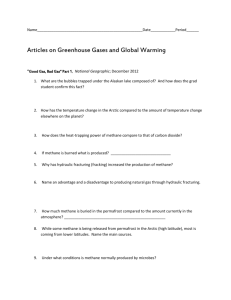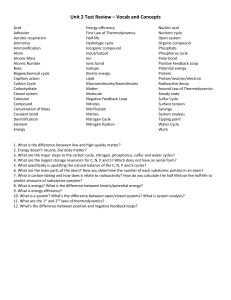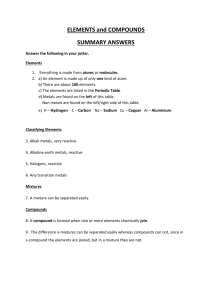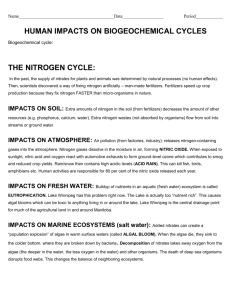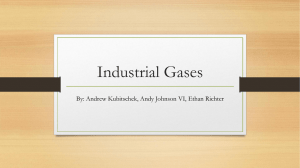3.1.5 Resonance Mode.. - Stanford School of Earth, Energy
advertisement
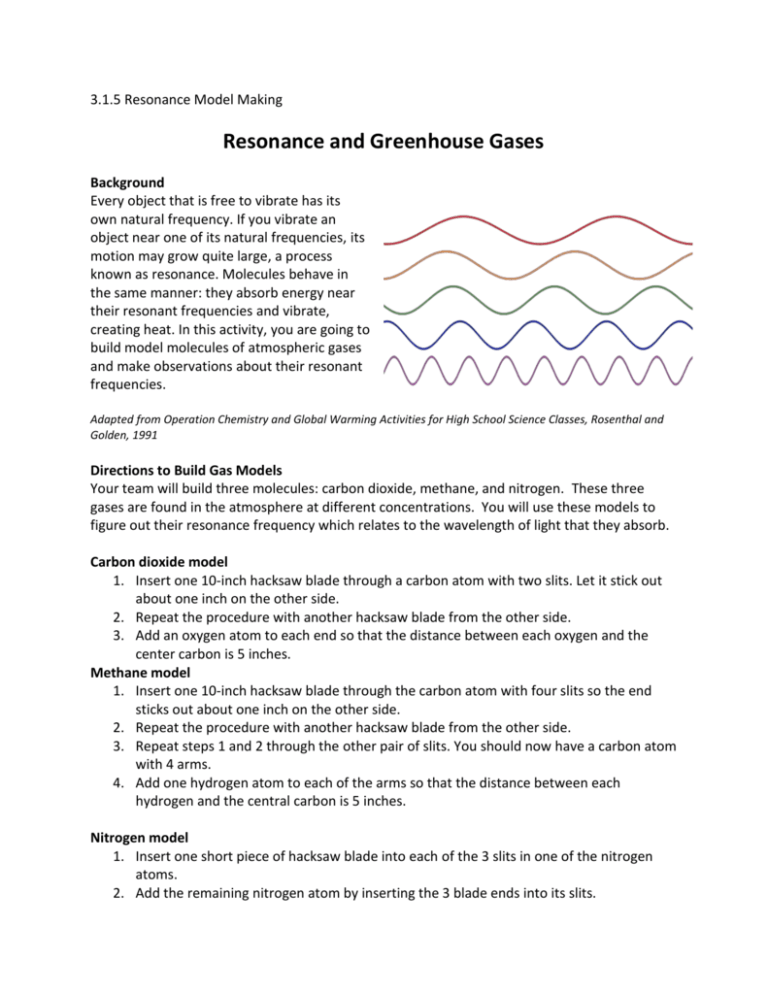
3.1.5 Resonance Model Making Resonance and Greenhouse Gases Background Every object that is free to vibrate has its own natural frequency. If you vibrate an object near one of its natural frequencies, its motion may grow quite large, a process known as resonance. Molecules behave in the same manner: they absorb energy near their resonant frequencies and vibrate, creating heat. In this activity, you are going to build model molecules of atmospheric gases and make observations about their resonant frequencies. Adapted from Operation Chemistry and Global Warming Activities for High School Science Classes, Rosenthal and Golden, 1991 Directions to Build Gas Models Your team will build three molecules: carbon dioxide, methane, and nitrogen. These three gases are found in the atmosphere at different concentrations. You will use these models to figure out their resonance frequency which relates to the wavelength of light that they absorb. Carbon dioxide model 1. Insert one 10-inch hacksaw blade through a carbon atom with two slits. Let it stick out about one inch on the other side. 2. Repeat the procedure with another hacksaw blade from the other side. 3. Add an oxygen atom to each end so that the distance between each oxygen and the center carbon is 5 inches. Methane model 1. Insert one 10-inch hacksaw blade through the carbon atom with four slits so the end sticks out about one inch on the other side. 2. Repeat the procedure with another hacksaw blade from the other side. 3. Repeat steps 1 and 2 through the other pair of slits. You should now have a carbon atom with 4 arms. 4. Add one hydrogen atom to each of the arms so that the distance between each hydrogen and the central carbon is 5 inches. Nitrogen model 1. Insert one short piece of hacksaw blade into each of the 3 slits in one of the nitrogen atoms. 2. Add the remaining nitrogen atom by inserting the 3 blade ends into its slits. What to Do Hold a gas model by the center atom and shake it (for nitrogen, hold one of the ends). Keep the amplitude of vibration (the shaking distance) less than 6 inches. First try very slow shaking (~2/second) and increase the speed of shaking. You are looking for the speed of shaking (frequency) that makes the molecule move the easiest, with the least jerky movements. Do this with all three gases. Observations Is there a frequency at which it is much easier to keep the model vibrating? At this frequency the model molecule absorbs and retains your energy output better. Less energy is lost to random movements. If there is such a frequency, determine what it is in vibrations per second by counting the number of vibrations in a 5-second interval and dividing by 5. Do at least three trials, letting different member of your group experiment and obtain the range of frequencies at which the maximum energy is absorbed. Repeat this procedure for all three models. Gas CO2 – carbon dioxide Frequency (# of vibrations per second) Trial 1 Trial 2 Trial 3 CH4 – methane N2 – nitrogen Record your group’s results on the board. Look at the results obtained by other groups and discuss how your results compare to those obtained by other members of the class. 1. Compare the resonant frequencies of the 3 models. 2. What hypothesis can you formulate to explain your observations? 3. Physicists tell us that the behavior of the models built from the tennis balls is a good analogy of the behavior of real molecules of carbon dioxide, methane, and nitrogen. From the observations of your models, can you explain why some gases in the atmosphere absorb infrared radiation and others do not? 4. Nitrogen is not a greenhouse gas, and carbon dioxide and methane are greenhouse gases. Why do you think greenhouse gases absorb infrared radiation and nitrogen doesn’t?


